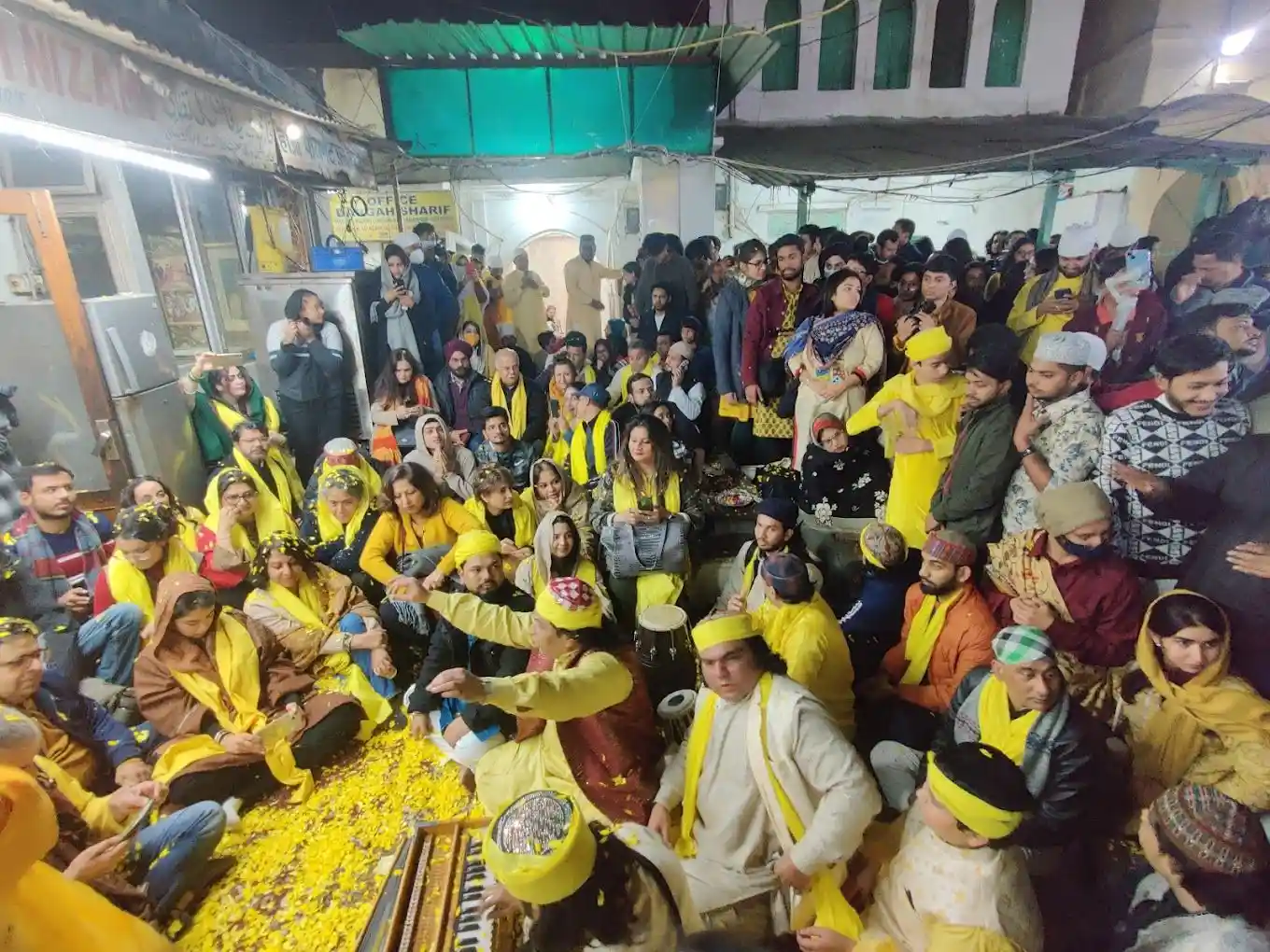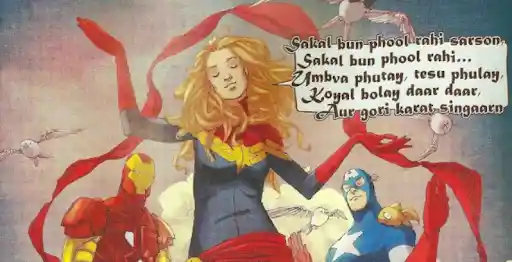Delhi’s Sufi Basant: A Cross Cultural Springtime Celebration
Every year, on the evening of Basant Panchami, celebrated on the fifth day of the Hindu month of Magha, the Dargah celebrates the onset of spring with flowers, songs of the spring, and prayers for peace. This celebration is called 'Sufi Basant'.

This is how the Dargah appears on the day of Basant Panchami.
This is how the Dargah appears on the day of Basant Panchami. Thousands of people visit the Dargah every day, but this day is even more special. This is the celebration of a cross-cultural tradition that has been going on for over 500 years. Every year, on the evening of Basant Panchami, celebrated on the fifth day of the Hindu month of Magha, the Dargah celebrates the onset of spring with flowers, songs of the spring, and prayers for peace.
How ‘Sufi Basant’ Originated
Many might wonder why a place typically associated with the Sufi sect of Islam celebrates a Hindu festival. The answer lies in a story from Nizamuddin Auliya’s life. Faced with grief over the loss of his young nephew, the Sufi saint went into what we might call depression in today’s terms. He stopped talking and a glum silence took over. His favorite disciple Amir Khusrow felt very troubled over it and wanted him to cheer up again.
After multiple tries, on the day of Basant Panchmi, Khusrow thought of an innovative idea — he had noticed that members of the Hindu community were dressed up in bright yellow clothes and carrying yellow flowers, which brought in a ray of positivity and happiness all around. He decided to dress up in yellow and carried flowers to the Dargah as he danced to make his teacher smile. This sudden arrival of flowers, accompanied by the bright yellow colors and songs of the spring cheered up Nizamuddin. Since then, this has become a yearly tradition.
Over half a millennium later, the cheery vibes that once made the Sufi master smile can still be felt here. As the qawwals raise their hands and sing the songs of the spring, yellow flowers and currency notes are showered upon them. The songs talk of different flowers — champa, chameli, and gulaab — about gardeners and farmers planting the crops, and talk of how mustard crops are about to thrive, about the koyal starting to sing, about buds opening up as the maiden wears new ornaments to mark the arrival of a new season. Many of these songs are written by Amir Khusrow himself.
Amir Khusrow’s Songs of the Spring
While Nizamuddin is one of the biggest names in the history of Sufi Islam in India, his disciple Amir Khusrow, too, earned a name for himself as ‘Tuti-i-Hind’ (which translates to ‘the parrot of India’) for the numerous songs that he wrote which continue to be sung today, over 700 years after his birth. “Chaap Tilak”, “Aaj Rang Hai”, and “Mann Kunto Maula” are some of his songs that are in public memory even today and are performed by various singers across the world.
Khusrow is an important literary figure not just because of the songs that he wrote but is also considered the father of the Hindustani language that most people across the Northern India and Pakistan region speak today. One of his springtime verses also appeared in a Marvel comic book:
Basant through the Ages
If one looks at the history of the celebration of Basant Panchmi in Delhi, one can trace it as far back to 1200 CE. As per the journalist and city chronicler RV Smith, one can actually trace it back to a few decades before Nizamuddin’s birth. Celebrations were known to be held around what is today the Turkman Gate area in Old Delhi.
Some celebrations during Firuz Shah Tughlaq’s reign have also been recorded to take place at Bhuli Bhatiyari ka Mahal, which is now a ruin that locals deem haunted. However, almost 800 years before delhiwallas claimed that ghosts lived in it, Sir Sayyid Ahmed Khan writes about how yellow flags were flown from the parapets of the mahal during the basant celebrations, and about how kites were flown to mark the onset of spring. Smith notes that some manjha sellers could be seen there all the way till the 1970s!
Basant has been celebrated in Delhi even under Mughal rule, usually at the tomb of Humayun, where basant ragas were sung. Bahadur Shah Zafar, the last Mughal emperor, also celebrated spring with great excitement and hosted the Basant Mela inside the Red Fort.
Many such celebrations live in the collective memory of the city even centuries after they were first celebrated. The celebration of Dussehra with ram lila at the Red Fort grounds, the springtime celebration of Sufi Basant, and the Phoolwalon ki Sair where pankhas are offered to the Yogmaya Temple and the Dargah of Bakhtiar Kaki — all continue to be a strong reminder of Delhi’s multicultural and multiethnic past.

This celebration typically marks the end of the harsh Delhi winters and indicates the onset of springtime.


